

Book review: Digital Body Language – How to build trust and connection no matter the distance by Erica Dhawan

A shorter version of this book review: Digital Body Language – How to build trust and connection no matter the distance by Erica Dhawan was published in the Summer 2021 edition of Professional Marketing Magazine which is sent free to members of the Professional Marketing Forum .
I was excited at the prospect of reading this book – assuming it would address the differences in physical body language in a virtual environment. Just what we all need as we polish our virtual presence in these remote working times! However, the book is concerned with how we express emotion and empathy, create trust, build virtual relationships and encourage collaboration through the digitally written word – in texts, chat, instant messages (IM) and emails.
The author observes wisely: “We’re all immigrants in today’s digital workplace” . So the book provides a way to interpret non-verbal digital cues. As such, the book has a wide appeal as we all need to develop our digital communication skills. Do you know how to convey trust, engagement, excitement and urgency in digital communications?
The detailed points on how to build better team communication in geographically and culturally diverse teams will be welcomed by many. It will be particularly valuable to those leading virtual teams – especially those comprising different genders, generations and cultures.
The book will be vital for those who focus on internal communications. There are also some helpful insights for crisis PR communications. And the author argues that digital body language is important for the client experience too. And there’s valuable content on how to establish online executive presence.
It provides a treasure chest of practical advice – and assessments and checklists – on how to avoid miscommunication in the workplace.
Book contents
The first part starts with an eye-opening exploration of digital style.
Four laws of digital body language
The second part examines the author’s four laws of digital body language:
- Value visibly – Be attentive to people and clearly communicate “I hear you”, “ I understand you” and “I value you” . Move from unstated appreciation to stated recognition. She explains how to show you are actively listening in a digital conversation. The importance of an appreciative environment and the work of is Nancy Kline is mentioned in this article on feedback .
- Communicate carefully – “G etting to the point while considering context, medium and audience”. She advises you to think before you type, to slow down, to be tone-deft, to consider the visual impact of messages and to take care with length, complexity and familiarity. There is a short video on the secrets of successful writing – especially being concise.
- Collaborate confidently – Stay in the loop, understand what other departments do and focus on stakeholder management and achieving buy-in, build team confidence, fight thoughtless deadlines and avoid digital group think. I produced a short video on achieving buy-in
- Trust totally – “Trust is not about what we say but how we say it”. There is advice on how to create psychological safety including modelling the behaviour you want to see, leaders being vulnerable and creating digital watercooler moments. I wrote on article about trust in business relationships.
The third part provides a valuable guide to navigating gender, generation and cultural differences.
Gender differences
There are fascinating insights into unconscious bias around gender – when we look at the name of the sender of an email and interpret the tone of the message. Linguists are cited who report that gender patterns have little boys being more assertive and girls being more indirect and taking the feelings of others into account.
“Women who communicate directly are perceived as cold, ruthless or withholding”. The lack of hedging language (i.e. perhaps, might, maybe), absence of detail or lack of back-and-forth questions can be perceived as a problem in a relationship with women. Yet guidance on showing confidence suggests otherwise.
There are HBR observations that women need to be seen as warm as well as confident and influential. To be authentic but use framing statements (e.g. “I’ll be as specific as possible to” ) and explain motivation. Men speak up more in meetings so facilitators have to encourage women to contribute. There are interesting insights into inclusive language rather than that with masculine or feminine skews. I enjoyed the funny explanation of digital mansplaining.
Generation differences
“Different generations don’t merely use different digital body language; they also have different interpretations of the same digital body language cues ”. The author reports that differences between digital adapters and digital natives isn’t always based on age alone.
There’s an exploration of the different interpretations of greetings such as “Hey” , “Hi” and “ Hello”. There are generational channel preferences and aversion by some to telephone calls and voicemails. The digital rule of thumb is that when the latest, most informal channel of communication comes along (e.g. texting), the channel preceding it (e.g. email) becomes obsolete overnight.
Cultural differences
The main focus is on the differences between high context cultures (implicit so they rely heavily on nonverbal cues) such as the Mediterranean, Latin America, Africa, Middle East, Asia, China and Japan) and low context cultures which are explicit such as most English-speaking Western cultures including the US and UK.
A key point is to cc managers in Asian organisations as a signal of respect. There’s also advice in high context cultures to include something to connect personally before outlining your request. Silence a sign of respect in high context cultures. Regional differences are also explored – for example, the differences between the East and West coast of America.
Slow down to accommodate different accents and ensure follow up emails summarise key points and actions. Communicating successfully with other cultures often involves the adaptation of so-called feminine language. Studies show that how we close emails has a significant effect on whether the recipient feels respected.
There are other articles on cultural differences:
Cross cultural communication – Kim Tasso
How can I improve my cross cultural communication (kimtasso.com)
Intercultural working – some insights – Kim Tasso
Digital anxiety and stress
To avoid causing digital anxiety and stress the author argues to always be impeccable with your word (which reminded me of Don Miguel Ruiz’s four agreements). The main causes of anxiety in digital communications are brevity, passive-aggressiveness , slow responses and formality.
I was stunned to learn about the power of emojis (“provide texture and context to our sleek digital communications” although she reports a study that overuse of emojis implied incompetence at work), abbreviations and punctuation marks (the humble “!” is elevated to super-power status). “ Women are more likely to use exclamation points to come across as friendly, warm and approachable whereas men are more likely to use them to signal urgency”. Even the use of a full stop or ellipses (…) can have different meanings in some channels.
Digital Body Language – How to build trust (Trust and power matrix)
The trust and power matrix helps with decisions on how quickly to respond and in what style as “the disconnect between intention and interpretation is exacerbated by the online disinhibition effect”. The author summarises as follows:
- Priority = choice of medium
- Emotion = punctuation and symbols
- Respect = timing (“ it takes 90 minutes for the average person to reply to an email and 90 seconds for the average person to respond to a text message”)
- Inclusion = To, Cs, Bcc, Reply all
- Identity = your digital persona
Your digital persona is comprised of the following:
- Your name (whether you use it in full or a shorter version, and whether you are male, female or non-binary)
- Your email (personal or company-branded? Outdated such as Yahoo!, Hotmail or Gmail?
- Your profile picture
- Your search results
Interesting statistics
The author argues that what is implicit in body language now has to be explicit in our digital body language . The text is peppered with anecdotes, stories and research studies to illustrate key points and different scenarios. Some of the points I noted:
- In some cultures, silence is a form of respect – whilst in others it isn’t tolerated. Research shows Brits can tolerate it for just four seconds, whereas Japanese are OK for eight seconds.
- 70% of all communications amongst teams is virtual. We send 306 billion emails every day – with the average person sending 30 emails daily and fielding 96. And 50% of the time the “tone” of our emails is misinterpreted
- Nonverbal cues make up 60 to 80 percent of face-to-face communication. It’s harder to show we care. Even our response time (what’s urgent) conveys information.
- The importance of greetings (there’s an analysis of “Hey”, “Hi” and “ Hello” ) and signatures ( “Kind regards” vs “Regards” vs “KR” etc).
- Thumbs up emoji signifies agreement or approval in Western cultures, but it is considered vulgar or offensive in Nigeria, Afghanistan, Iraq and Iran.
- Psychologist James Pennebaker found that in any interaction the person with the higher status uses I-words less than people with low status.
- Linguist Naomi Baron found we comprehend less when reading on a screen than we do when reading print.
- Introverts need longer to process information and therefore may appear to be less talkative on video calls.
- 65% people admitted to doing other work or sending email while participating in conference calls.
- 80% projects suffer from a lack of clarity and detail – 56% of strategic projects fail as a result of poor communication.
- A Fortune study found that 60% of all employees have to consult with at least 10 colleagues daily just to get their jobs done. Half of the 60% need to engage with more than 20 colleagues.
- A third of young professionals feel no qualms about using emojis when communicating with colleagues.
Guidance for meetings and messages
The author includes basic (one would have thought common sense) ideas on how to be a meeting ninja – including a ban on multi-tasking. (There’s some material on managing virtual teams ). She does the same for messages – use the 3Ws – who, what and when.
You should indicate in the subject line whether it’s:
- Decision request
- Information request.
You should break long messages into parts – a quick summary and then the details.
Show people instead of telling them by attaching screen shots and other images. Present options rather than ask open ended questions. And specify guidelines for when and how to communicate on different internal channels (I liked the tables showing the tool, when to use, response time and norms of use). There’s also examples of weak and powerful commitments at the end of meetings.
I liked the way she described people’s reactions to telephone calls now: “ so used to controlling when and how we respond to texts and emails that when a phone call comes in, we treat it like a bomb that’s set to detonate on the sidewalk”.
PS I constantly questioned the author’s wise words and research findings in terms of its relevance to professional services – an environment where formality and hierarchy often still dominates. But the author reports that her contacts in PSFs feel that formality has generally gone down in the workplace.
Related Posts
- Book review: How to be great at the stuff you hate: The straight talking guide to persuading, networking and selling By Nick Davies
- What is NLP (Neuro Linguistic Programming)?
- Fabulous First Meetings – 16 selling insights
- Presentation skills – Preparing the content and delivery
- Delegation for leaders
- Selling legal services with storytelling
- Trust for better business relationships
- Ten psychological ideas that employers, recruiters and HR people need to know
- An MBA is great – but you’ll need soft skills to make an impact
- Be more confident and convey confidence
- 20 ideas to improve impact, assertiveness and effectiveness for marketing and BD assistants and executives
- Future Marketing Manager – Eight steps to manage virtual teams
- Podcast – With Kiran Kapur of Cambridge Marketing College on soft skills for marketing professionals
- Book review – Persuasion: The art of influencing people by James Borg
- Book Review – Never split the difference: Negotiating as if your life depended on it by Chris Voss with Tahl Raz
- Counsel article - Building rapport in the digital space and fixing ruptured relationships for barristers
- Managing client complaints – Process, anger and apologies
- Referrals – The role of internal communications, messaging and storytelling and post-Covid “water cooler” moments
- Telephone skills workshop – 11 key points
- Emotional Regulation – A key element of Emotional Intelligence (EQ)
- Hooks, Headlines and Hard-Wired Words: 11 ideas for better writing
- An introduction to presentation skills – Easy as ABC (Video)
- Telephone skills: Anxiety, voice, etiquette and the client experience
- Classic management book reviews – The McKinsey way, Good to great, How to manage organisational change and Strategic Selling
- The Proactive M&BD Executive – Culture shock, marketing models, fee-earner engagement, qualifications and social media
- 22 tips on being a persuasive writer in professional services
- Book review: Influential Internal Communication by Jenni Field
- Stakeholder engagement and buy-in: Influence and persuasion skills with Aristotle and Knights and Dinosaurs
- Does Zoom/Teams replace telephone calls? Telephone skills workshop
- Marketing in the Metaverse – An opportunity for professional services?
- Seven pitching themes – specialisation, engagement, research, content, differentiation, project management and virtual presence (May 2021)
- The impact of Covid on listening while selling
- Business relationships – How the parent, adult, child (PAC) model helps with difficult interactions (Video)
- Non-Verbal Communication (NVC) – the basics (Video)
- Consulting skills 2 – Book review: Flawless Consulting by Peter Block
- An introduction to emotional intelligence (EQ) and empathy (Video)
- Be visible, assert and challenge and remember your goals – Insights from an Assertiveness, impact and effectiveness workshop
- Active Listening (Video)
- Storytelling book reviews: The Story Advantage by LJ Bloom and The Story Factor by Annette Simmons
- Psychology and business communication: An introduction to Transactional Analysis (TA)
- Book review: The psychology of successful women by Shona Rowan
- Better Business Relationships – The building blocks (video)
- What are soft skills? And why are they so important? (Video)
- Consulting skills 1 – Book review: The Art of Consultancy by Calvert Markham

Six questions from Proactive Marketing/BD Executives – Time, buy-in, cross-selling, social media, events and AI

Negotiating skills – Balancing task and relationship

Pick up the phone – Who answers calls, how do you train people on call handling and how do you improve conversion rates?

Book Review: The Tools – Five life-changing techniques to unlock your potential by Phil Stutz and Barry Michels

Marketing and BD case studies in legal, accountancy, consultancy and property firms

Personal transitions: Retiring from a senior leadership role – the other side of succession

Private client commercial conversations

Email marketing and automation with TBD and PM Forum
Share this:.
MIT Technology Review
- Newsletters
Digital body language for the post-pandemic era
Erica Dhawan, MBA ’12
- Kara Baskin archive page

The awkward pause on a Zoom call. The brusque, ambiguous email. The context-free meeting invite. When online interactions are so easily misconstrued, effective communication is essential. As the author of the new book Digital Body Language , Erica Dhawan, MBA ’12, trains corporate leaders to connect fluently in this new era of remote work, with clients ranging from the US Army to Pepsi to Deloitte.
Her mission is deeply personal, rooted in her memories of being a timid elementary schooler in Pittsburgh.
“My parents were Indian immigrants, which meant that we spoke Hindi at home. When I got to school, I was the quietest kid in the class,” she remembers. “One of the strengths I developed because I was so shy was an ability to observe and decipher body language. I would watch the popular girls with their head tilted to the side, the cool kids slouching during school assemblies. I really tried to assimilate to the world of American body language.”
Fast-forward 30 years, and she’s using that hard-won intuition to decode a digital-first world where visual and written cues matter more than ever. In addition to her writing, she delivers keynotes to Fortune 500 companies—for the past five years, at a rate of 40 to 70 talks per year.
“We’re all immigrants to the world of digital body language,” she says. “I’m committed to building a movement of knowledge and training for what I believe are the skills of the new post-pandemic era.”
Those skills hinge on what she calls connectional intelligence. The concept, which prioritizes deep, quality interactions, contrasts sharply with typical measures of virtual success: number of Twitter followers, LinkedIn connections, or Zoom meetings per day.
“We’re living in a digital communications crisis, where the reaction is to connect more instead of connecting intelligently,” she says. People with connectional intelligence understand which meetings should be calls, and when to look directly at the camera during a Zoom to signal attention: “They know to never confuse brevity with clarity, that reading carefully is the new listening, and writing clearly is the new empathy.”
New ways of working prompted by the pandemic, she believes, could allow workplaces to become “more geographically inclusive, less visually biased toward traditional body language, and more creative about engaging anyone, anywhere, to be part of a solution.”
Dhawan has two children and enjoys Bollywood dance in her spare time. Dancing, she says with a laugh, “taught me that when we’re connecting with others, everything is a performance.”
Keep Reading
Most popular, large language models can do jaw-dropping things. but nobody knows exactly why..
And that's a problem. Figuring it out is one of the biggest scientific puzzles of our time and a crucial step towards controlling more powerful future models.
- Will Douglas Heaven archive page
The problem with plug-in hybrids? Their drivers.
Plug-in hybrids are often sold as a transition to EVs, but new data from Europe shows we’re still underestimating the emissions they produce.
- Casey Crownhart archive page
Google DeepMind’s new generative model makes Super Mario–like games from scratch
Genie learns how to control games by watching hours and hours of video. It could help train next-gen robots too.
How scientists traced a mysterious covid case back to six toilets
When wastewater surveillance turns into a hunt for a single infected individual, the ethics get tricky.
- Cassandra Willyard archive page
Stay connected
Get the latest updates from mit technology review.
Discover special offers, top stories, upcoming events, and more.
Thank you for submitting your email!
It looks like something went wrong.
We’re having trouble saving your preferences. Try refreshing this page and updating them one more time. If you continue to get this message, reach out to us at [email protected] with a list of newsletters you’d like to receive.
MIT Press Bookstore celebrates Massachusetts Space Week! Close this alert

Digital Body Language: How to Build Trust and Connection, No Matter the Distance
Description.
An instant Wall Street Journal Bestseller Now in paperback—the definitive guide to communicating and connecting in a hybrid world. Email replies that show up a week later. Video chats full of “oops sorry no you go” and “can you hear me?!” Ambiguous text-messages. Weird punctuation you can’t make heads or tails of. Is it any wonder that communication takes us so much time and effort to figure out? How did we lose our innate capacity to understand each other?
Humans rely on body language to connect and build trust, but with most of our communication happening from behind a screen, traditional body language signals are no longer visible—or are they? In Digital Body Language , Erica Dhawan, a go-to thought leader on collaboration and a passionate communication junkie, combines cutting edge research with engaging storytelling to decode the new signals and cues that have replaced traditional body language across genders, generations, and culture. In real life, we lean in, uncross our arms, smile, nod and make eye contact to show we listen and care. Online, reading carefully is the new listening. Writing clearly is the new empathy. And a phone or video call is worth a thousand emails. Digital Body Language will turn your daily misunderstandings into a set of collectively understood laws that foster connection, no matter the distance. Dhawan investigates a wide array of exchanges—from large conferences and video meetings to daily emails, texts, IMs, and conference calls—and offers insights and solutions to build trust and clarity with anyone in our ever-changing world.
About the Author
ERICA DHAWAN is a globally recognized leadership expert and keynote speaker helping organizations and leaders innovate faster and further, together. Erica has spoken, worldwide, to organizations and enterprises that range from the World Economic Forum to U.S. and global Fortune 500 companies, associations, sports teams, and government institutions. Named as one of the top management professionals around the world by Global Gurus, she is the founder and CEO of Cotential - a company that has helped leaders and teams leverage twenty-first-century collaboration skills globally. Her writing has appeared in dozens of publications, including Fast Company and Harvard Business Review , and she is the author of Digital Body Language and Get Big Things Done . She has an MPA from Harvard Kennedy School, MBA from MIT Sloan, and BS from The Wharton School.
Praise for Digital Body Language: How to Build Trust and Connection, No Matter the Distance
“This book is a welcome and practical guide to the ways in which we need to rethink how we interpret on-screen and inbox behaviour. Developing a common digital body language will help everyone—while also opening a path to better ways for all of us to relate to one another and create a sense of inclusion and belonging.” — Financial Times “Fascinating, helpful, and engaging…Dhawan offers this timely book on digital body language and creative ways to foster inclusion and belonging in digital communications in the workplace.” — Booklist “Dhawan’s high-energy advice comes right on time. Anyone trying to find their way through the new normal of office life will learn something from this real-world guide to respectful, productive communication.” — Publishers Weekly “Written in an approachable style, this will be a useful resource for anyone who struggles with online communication.” — Library Journal " Digital Body Language is an indispensable guide to a business world turned upside down by video calls, group texts, and remote work. With Dhawan’s expert guidance, you’ll learn how to read and send the subtle cues that signal trust, competence, and authenticity. You’ll discover practical tips for using everything from exclamation points to emojis. Most of all, you’ll understand that that effective communication and collaboration begin with valuing others.” — Daniel H. Pink, author of When , Drive , and To Sell Is Human “A profound look at how to foster inclusion and better leadership in our digital world." — Billie Jean King, Founder, Billie Jean King Leadership Initiative "Non-verbal cues are vital to understanding each other. Now that so much communication happens online—and with the massive shift to distance learning and remote workplaces—we need Erica Dhawan’s book more than ever." — Sheryl Sandberg, COO of Facebook and founder of Lean In and Option B "One of the most common problems in digital life is that the intended message gets lost in translation, and we get trapped in an ongoing game of telephone. Erica Dhawan has compelling solutions to help us send and receive the right signals.” — Adam Grant, New York Times bestselling author of Think Again and Originals , and host of the TED podcast WorkLife “ Digital Body Language brings us crucial insights and a playbook for communicating in our digital and virtual world!” — Alan Mulally, Former CEO of Boeing Commercial Airplanes and the Ford Motor Company "This book is a breakthrough that will be read for years to come. People are already judging you by how you show up in the digital world, but now Erica Dhawan helps you figure out how to earn the benefit of the doubt." — Seth Godin, Author, The Practice " Digital Body Language is an extraordinary and essential book for our time. With powerful stories and fascinating research, Erica Dhawan masterfully shows that, even in our digital age, we can connect and make change together." — Susan David, author of Emotional Agility "If you're e-mailing, zooming, IM-ing etc. in your important relationships and for getting things done, professionally and personally, this is a must-read. Bravo, Erica." — David Allen, international bestselling author of Getting Things Done "Filled with lively and entertaining examples of real conversations, Digital Body Language gives you the tools to understand what can go wrong in communication—and to find a common language in which to strengthen relationships at work and at home. This book will change forever the way you approach digital conversations." — Tiffany Dufu, Founder of The Cru “Erica Dhawan is a true master of collaboration...no one committed to success and teamwork can afford to miss this opportunity to learn from her.” — Erik Spoelstra, Head Coach of Miami Heat “I love both the message and the messenger of this brilliant book. Listen to what Erica Dhawan has to say about digital body language—and then take her advice. This is the contemporary guidebook for inclusion and authenticity in the workplace, no matter our distance.” — Subha Barry, President of Working Mother Media " Trust is the ultimate currency in the digital age. This book is a must-read for leaders, offering tangible and authentic ways to strengthen trust and create a virtual work environment where people feel they truly belong." — Ellyn Shook, Chief Leadership and Human Resources Officer, Accenture “This book is a gigantic leap towards communicating well in the digital age. It is a mandatory guide for anyone who wants to decode all the cryptic messages we are sending and receiving and be a more effective communicator and collaborator online.” —Rob Nail, Co-Founder of Singularity University “We are living at a time when becoming skilled in Digital Body Language is non negotiable. For everyone. It’s the digital application of emotional intelligence. I can’t think of anyone who would not benefit from reading this book.” —Peter Bregman, CEO of Bregman Partners and Author of Leading with Emotional Courage “In a world where innovation increasingly happens on-line, we must unlock the full potential of digital conversations and avoid its plentiful traps. Digital Body Language shows you how.” —Alex Osterwalder, entrepreneur, business model innovator, and author "A must-read for anyone wishing to introduce better communication and greater empathy in their workplace." — Pat Mitchell, Co-Founder; Curator TEDWomen; Chair, Sundance Institute and Women’s Media Center
You May Also Like
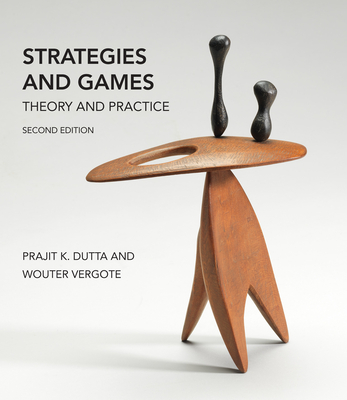

Strategies and Games, second edition: Theory and Practice

What's Wrong?: Personal Histories of Chronic Pain and Bad Medicine
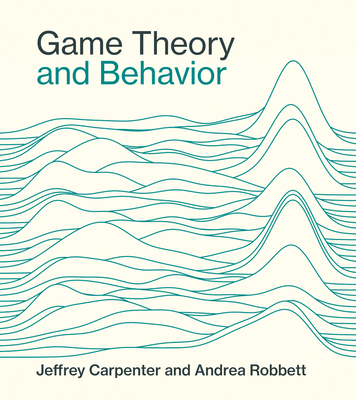
Game Theory and Behavior
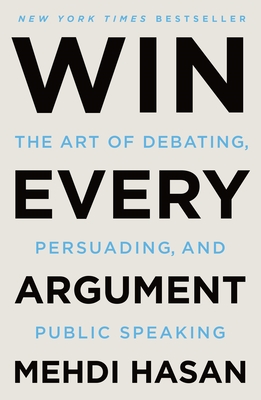
Win Every Argument: The Art of Debating, Persuading, and Public Speaking

Succeeding Outside the Academy: Career Paths Beyond the Humanities, Social Sciences, and Stem

For Blood and Money: Billionaires, Biotech, and the Quest for a Blockbuster Drug
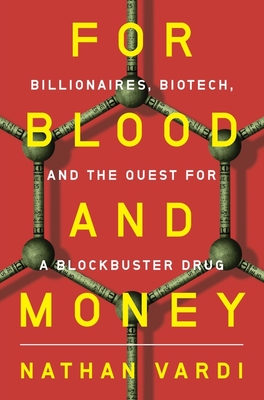
Kill Reply All: A Modern Guide to Online Etiquette, from Social Media to Work to Love

Mathematics for Economics, fourth edition

Why Stock Markets Crash: Critical Events in Complex Financial Systems (Princeton Science Library #49)
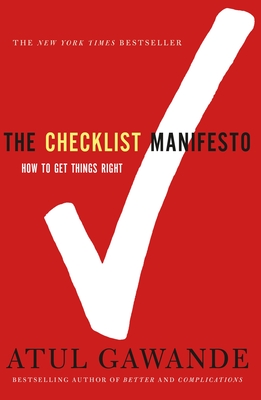
The Checklist Manifesto: How to Get Things Right

Student Solutions Manual to Accompany Health Economics, second edition

Crowdsourcing (The MIT Press Essential Knowledge series)

Law and the Wealth of Nations: Finance, Prosperity, and Democracy

For Profit: A History of Corporations
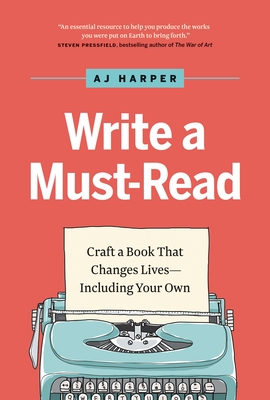
Write a Must-Read: Craft a Book That Changes Lives—Including Your Own

Better Data Visualizations: A Guide for Scholars, Researchers, and Wonks
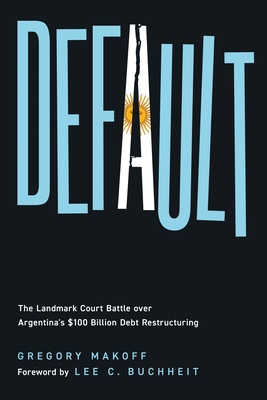
Default: The Landmark Court Battle Over Argentina's $100 Billion Debt Restructuring
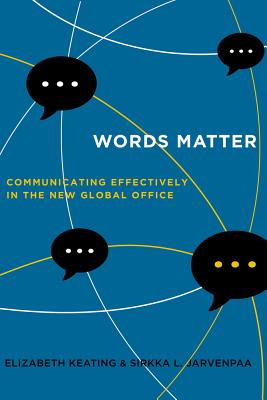
Words Matter: Communicating Effectively in the New Global Office

Plagues Upon the Earth: Disease and the Course of Human History (Princeton Economic History of the Western World)

Economic Dynamics, second edition: Theory and Computation
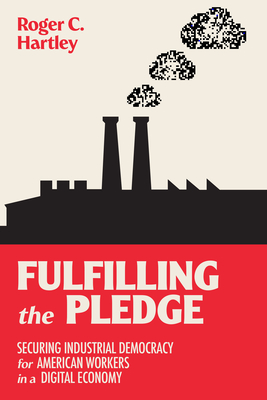
Fulfilling the Pledge: Securing Industrial Democracy for American Workers in a Digital Economy
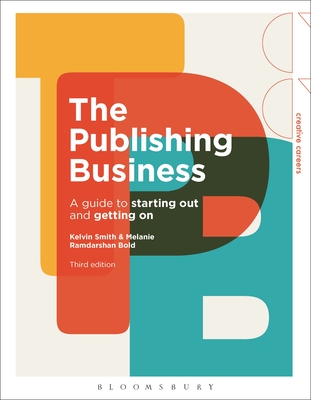
The Publishing Business: A Guide to Starting Out and Getting on (Creative Careers)
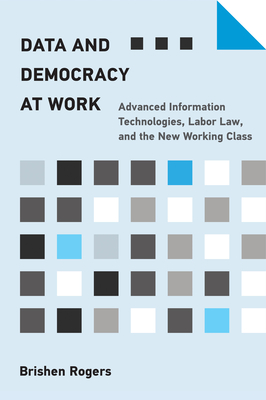
Data and Democracy at Work: Advanced Information Technologies, Labor Law, and the New Working Class
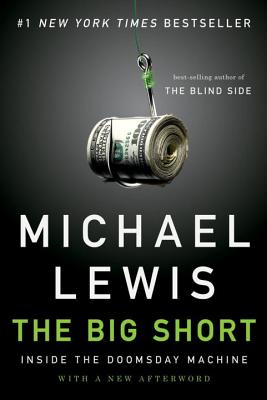
The Big Short: Inside the Doomsday Machine

How Much Inequality Is Fair?: Mathematical Principles of a Moral, Optimal, and Stable Capitalist Society

Small Business Trends
How’s your digital body language.
An important and easy-to-use guide for digital communication. Learn the best way to get updates on projects, run meetings and manage a happy and productive team.

If you buy something through our links, we may earn money from our affiliate partners. Learn more .
You know the old adage, “It’s not what you say, it’s how you say it?” This applies to your digital body language as well. But wait; how do you translate voice, intonation, and body language into an email? And what about video? Isn’t video just like being there?
All I can tell you is that … digital body language is a thing.
In fact, it’s an important thing that’s been noticed and yet ignored because we didn’t realize that it was a thing.
If you’ve ever been offended by a text or gotten into a misunderstanding over email — you need to keep reading
If you haven’t, it’s just a matter of time — so you should keep reading too.
I received a review copy of Digital Body Language: How to Build Trust and Connection, No Matter the Distance by Erica Dhawan a few months ago. I knew it was an important book and wanted to take the time to digest the whole thing. And, now that I have, all I can say is Hallelujah and thank you to author Erica Dhawan for finally saying the great unsaid.
What is Digital Body Language
Let’s start with what you already know; emails, texts, even Zoom calls are all forms of communication. In fact, each is a kind of language unto itself. Whether you send a text, email, or make a phone call is an important choice. Your word choice, response times, and yes, even your punctuation and use (or non-use) of emojis or gifs matter.
Too much? I don’t think so. Dhawan is not just on to something, she’s actually put a name to it and it’s called Digital Body Language. According to Dhawan, all your traditional leadership skills, emotional intelligence, and Dale Carnegie training are useless if you can’t translate your in-person communication into equally engaging digital communication.
Efficiency Over Emotion Doesn’t Work
Remember when you had that communication class and they told you that 70 percent of all communication was non-verbal? Did you forget that lesson when you sent an email that sounded like you were a robot? ?
Dhawan shares example after example of smart, capable, leaders and managers who had mastered the art of real-life communication, but fell flat in their digital communication.
Let me say that I understand — and I don’t understand. Dhawan shares an important ingredient list for effective in-person communication. None of this will be new to you. What I think you’ll find surprising, however, is that many people simply didn’t take the time to translate these important rules into their digital communication — and honestly, this worries me for the future of our businesses. (LOL ?)
She says that when we communicate digitally:
We are cue-less : In the past, we’ve used written communication for more formal types of writing such as reports. And, formal writing with formal punctuation simply doesn’t translate well when you’re texting.
Our ability to care is compromised: When we’re face-to-face, it’s easy to give and receive appreciation; with a handshake for a job well done or a warm smile.
Our timing is off : When you’re talking to someone either on the phone or face-to-face, the feedback loop is immediate. But, when you transfer that communication to a text or email, the immediacy disappears.
Screens skew our reactions: Just because you see someone on a video call doesn’t mean you’re getting the full picture.
So, dear friends, your job is to replace all these traditional real life forms of body language feedback with digital replacements. And in Digital Body Language, Dhawan gives you everything you need to sound like a flesh and blood human in a pixelated world.
Heck Yeah! There are Cheat Sheets
Digital body language is like bad breath — you’re putting people off and you may not even know it. Luckily, Dhawan practices clear communication throughout the book so that you can stop stressing and start communicating like a pro:
You’ll find standard phrases for when someone is feeling anxiety and stress like:
How to follow-up without being a passive-aggressive nag:
Have you seen this meme going around on your Facebook or Twitter?

I have to confess that I’ve done the first one for sure with the added jab of including the email that I sent before — or pulling a quote. Sheesh, that was rude.
All of these passive-aggressive phrases are really just efforts to get things done. Here’s a much better strategy:
- Amend the subject line to clearly state that this is a follow-up and not a new task. Remember, people use emails as task trackers – so make your subject clear.
- Don’t cc: new people unless you have to or you have agreed to. This is critical. The true function of a cc: is to keep relevant people informed. For example, if your team leader or client asks you to reach out to someone, you cc them in one round of communication. Once, that you reached out and once from that person that they responded. That’s enough.
- Suggest another way to communicate — get on the phone. If you haven’t heard from someone and it’s important, schedule a meeting so you can actually speak.
What Makes Erica Dhawan an Expert in Digital Body Language?
When you get this book (and yes, every business person should get this book), I urge you to read the introduction. It’s a bit lengthy as far as introductions go, but you’ll get valuable context and insight into Erica Dhawan that will make the rest of the book infinitely more enjoyable to read.
She tells the story of being a shy Indian girl and how she honed her body language skills in school. Even as a successful teacher, leadership expert, and business owner, she continued to embrace her natural curiosity behind non-verbal communication.
This translated naturally into today’s new world of work.
Dhawan is the co-author of the bestselling book Get Big Things Done , she was named by Thinkers50 as the “Oprah of Management Ideas” and featured as one of the Top 30 Management Professionals around the world. She hosts the award-winning podcast “Masters of Leadership”
And, she’s written this helpful guide and manual so the rest of us can show up as we really are both online and offline.
Use Digital Body Language as Your Handbook
First, praises to Dhawan for recognizing a problem and passionately working to help us all become better communicators. And, shame on me (and maybe you) for not taking the time to apply what we know about in-person communication to the online tools we have.
After all, there are emojis, gifs, punctuation marks, videos, etc. So many wonderful tools that will get the word out. Hence, the only explanation I have for the crappy communication that so many of us are inflicting or experiencing is that we simply haven’t taken the time to master our digital communication tools.
Whatever your personal reasons, it’s time to simply stop tolerating poor digital communication.
Virtual work is here to stay for many of us. And your business simply can’t afford to lose a valuable client or team member because you didn’t take the time to insert an emoji.
Get discounts and special offers on new and classic business books with an Audible Premium Plus membership. Learn more and sign up for an account today.
Image: amazon

Comments are closed.
© Copyright 2003 - 2024, Small Business Trends LLC. All rights reserved. "Small Business Trends" is a registered trademark.

IMAGES
VIDEO
COMMENTS
Body language has been actively studied since the 1960's with the general public becoming more aware of its existence with the book "Body Language" published in 1978. My undergraduate degree was in Communications and I have a pretty good understanding of non-verbal cues so my first reaction to "Digital Body Language" was all this information is ...
This is where Digital Body Language becomes important. Signs that were implicit when communicating in the physical world have to now be made explicit by tailoring the communication we send out. This book, supported by case stories, presents strategies to enhance your digital body language, thereby strengthening your communication.
It will be particularly valuable to those leading virtual teams - especially those comprising different genders, generations and cultures. The book will be vital for those who focus on internal communications. There are also some helpful insights for crisis PR communications. And the author argues that digital body language is important for ...
Find helpful customer reviews and review ratings for Digital Body Language: How to Build Trust and Connection, No Matter the Distance at Amazon.com. Read honest and unbiased product reviews from our users.
Editorial Reviews. 03/08/2021. Building trust among remote work teams is no small feat, advises executive coach Dhawan (Get Big Things Done) in this sharp, timely treatise on the importance of translating body language to the digital space.Nonverbal cues, she writes, make up such a large part of communication that learning to function without them is a new skill: virtual employees face ...
The context-free meeting invite. When online interactions are so easily misconstrued, effective communication is essential. As the author of the new book Digital Body Language, Erica Dhawan, MBA ...
Digital Body Language will turn your daily misunderstandings into a set of collectively understood laws that foster connection, no matter the distance. Dhawan investigates a wide array of exchanges—from large conferences and video meetings to daily emails, texts, IMs, and conference calls—and offers insights and solutions to build trust and ...
Digital Body Language will turn your daily misunderstandings into a set of collectively understood laws that foster connection, no matter the distance. Dhawan investigates a wide array of exchanges—from large conferences and video meetings to daily emails, texts, IMs, and conference calls—and offers insights and solutions to build trust and ...
What is Digital Body Language. Let's start with what you already know; emails, texts, even Zoom calls are all forms of communication. In fact, each is a kind of language unto itself. Whether you send a text, email, or make a phone call is an important choice. Your word choice, response times, and yes, even your punctuation and use (or non-use ...
In Digital Body Language, Erica Dhawan, a go-to thought leader on collaboration and a passionate communication junkie, combines cutting edge research with engaging storytelling to decode the new signals and cues that have replaced traditional body language across genders, generations, and culture. In real life, we lean in, uncross our arms ...
Digital Body Language will turn your daily misunderstandings into a set of collectively understood laws that foster connection, no matter the distance. Dhawan investigates a wide array of exchanges—from large conferences and video meetings to daily emails, texts, IMs, and conference calls—and offers insights and solutions to build trust and ...
This is where Digital Body Language becomes important. Signs that were implicit when communicating in the physical world have to now be made explicit by tailoring the communication we send out. This book, supported by case stories, presents strategies to enhance your digital body language, thereby strengthening your communication.
In Digital Body Language, Erica Dhawan, a go-to thought leader on collaboration and a passionate communication junkie, combines cutting edge research with engaging storytelling to decode the new signals and cues that have replaced traditional body language across genders, generations, and culture. In real life, we lean in, uncross our arms ...
In Digital Body Language, Erica Dhawan, a go-to thought leader on collaboration and a passionate communication junkie, combines cutting edge research with engaging storytelling to decode the new signals and cues that have replaced traditional body language across genders, generations, and culture. In real life, we lean in, uncross our arms ...
Reading digital body language requires a set of data mined from both your electronic and non-electronic resources, as well as "a marketing team prepared to implement numerous processes that deliver the right communication at the right time to the right prospect.". No easy task and one that Woods says require "the entire organization to ...
The "Digital Body Language" book summary will give you access to a synopsis of key ideas, a short story, and an audio summary. ... Digital Body Language Review. Digital Body Language (2021) by Erica Dhawan is an insightful guide to decoding and leveraging virtual communication cues to bridge the digital divide. Here's why this book is worth ...
This is where Digital Body Language becomes important. Signs that were implicit when communicating in the physical world have to now be made explicit by tailoring the communication we send out. This book, supported by case stories, presents strategies to enhance your digital body language, thereby strengthening your communication.
Digital body language refers to the cues, signals and nonverbal behavior that individuals display in online profiles, emails, chats or other virtual interactions. These cues can manifest in various forms, including in LinkedIn photos, online word choice, and even behaviors during video calls such as camera usage and attentiveness.
And in Digital Body Language, Dhawan gives you everything you need to sound like a flesh and blood human in a pixelated world. Heck Yeah! There are Cheat Sheets. Digital body language is like bad breath — you're putting people off and you may not even know it. Luckily, Dhawan practices clear communication throughout the book so that you can ...
Digital Body Language will turn your daily misunderstandings into a set of collectively understood laws that foster connection, no matter the distance. Dhawan investigates a wide array of exchanges―from large conferences and video meetings to daily emails, texts, IMs, and conference calls―and offers insights and solutions to build trust and ...
In her book, Dhawan defines "digital body language," explains what it means and provides four laws to follow - all helpful in settling the digital world. 5 people found this helpful. Helpful. Report. Mark T. 3.0 out of 5 stars Beware Defective Books. Reviewed in the United States on February 17, 2022 ...